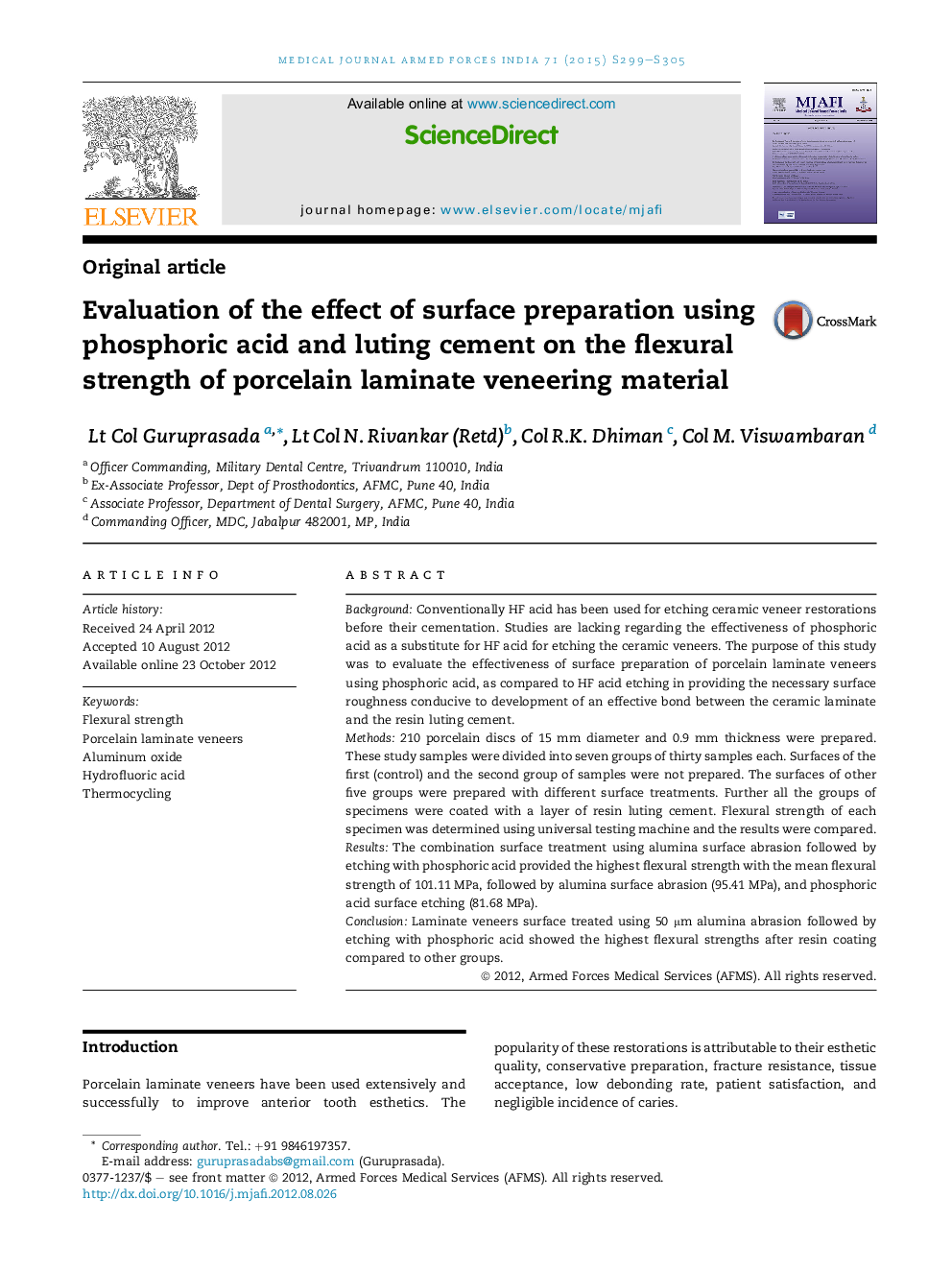| Article ID | Journal | Published Year | Pages | File Type |
|---|---|---|---|---|
| 3161067 | Medical Journal Armed Forces India | 2015 | 7 Pages |
BackgroundConventionally HF acid has been used for etching ceramic veneer restorations before their cementation. Studies are lacking regarding the effectiveness of phosphoric acid as a substitute for HF acid for etching the ceramic veneers. The purpose of this study was to evaluate the effectiveness of surface preparation of porcelain laminate veneers using phosphoric acid, as compared to HF acid etching in providing the necessary surface roughness conducive to development of an effective bond between the ceramic laminate and the resin luting cement.Methods210 porcelain discs of 15 mm diameter and 0.9 mm thickness were prepared. These study samples were divided into seven groups of thirty samples each. Surfaces of the first (control) and the second group of samples were not prepared. The surfaces of other five groups were prepared with different surface treatments. Further all the groups of specimens were coated with a layer of resin luting cement. Flexural strength of each specimen was determined using universal testing machine and the results were compared.ResultsThe combination surface treatment using alumina surface abrasion followed by etching with phosphoric acid provided the highest flexural strength with the mean flexural strength of 101.11 MPa, followed by alumina surface abrasion (95.41 MPa), and phosphoric acid surface etching (81.68 MPa).ConclusionLaminate veneers surface treated using 50 μm alumina abrasion followed by etching with phosphoric acid showed the highest flexural strengths after resin coating compared to other groups.
